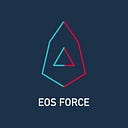Decentralization is one of the most debated topics in the crypto and blockchain industry and now is under even more attention after a controversial move of a Block Producer on the EOSIO mainnet blockchain to offer money for people who vote for it.
Controversies started out when an EOS top Block Producer published an article entitled “We Gonna Share BP Proceeds with You — This Is the Way We Warm You Up in This ‘Winter’!”, in which the BP shows the specific steps to get revenue for voting for Starteos.
This article has since sparked debate and heated responses from the overall EOS community and larger crypto media, raising questions on the decentralization of the EOS blockchain. The main argument is: since BPs like Starteos can thus buy votes from voters, the ones that eventually could be able to offer more money would eventually centralize the network.
It is not the first time the blockchain industry has questioned the degree of decentralization of EOS blockchain. Although the creator of EOS, Block.One CTO Daniel Larimer, has claimed that the focus of EOS is covers more than decentralization, doubts have been raised on the decentralization of its onchain governance, which is the subject of the Starteos controversy.
Back in September, Huobi’s BP got involved in a “vote-trading” scandal that caused a series of BP collusion allegations against a group of China-based BPs. Reportedly, according to a leaked document from a Huobi employee, exact numbers of traded votes between implicated BP parties are documented. The implicated BPs hold massive amounts of votes and most of them currently reside in top BP rankings.
The scandal stirred up a sizeable reaction from the EOS community to boycott Chinese BPs but with no trangible results. The involved BPs continued to remain in the top positions.
The detailed process and procedures of token-trading and BP collusion are largely unknown. Yet one thing remains certain, that there is no current effective measure against these network behaviors hypothetically. And if these behaviors are happening, there would not be a way to stop it.
Further analysis of the current voting mechanism of EOS blockchain can reveal the following facts:
- EOS BPs can vote up to 30 other BPs with each of their tokens. They can choose to vote for the ones as they please, and there would be no disincentive for them not to use up the full 30 vote cap.
- Certain top BPs hold massive amounts of vote and have firm connections with whale holders or are whale holders themselves. These votes hold so much of the network active votes that they can gurantee a top 21 BP position or more.
- There is a number of top BPs that hold no active community, and the background of their team and the source of their votes remain unknown.
These facts are unique to the EOS blockchain as a consequence of its unique governance features. The one-token-30-votecap model gives any token holder a variety of BP candidates they can vote for. However, the low voting participation rate does not reduce the risk of network centralization of the few whale holder BPs. Yet onchain governance protocols against malicious governance behaviors are not in place. If there is a concensus against Starteos vote-buying behaviors, then it has to come from a deeper level.
If a BP has a large amount of votes, it should be able to vote itself up to a BP position. Blockchain governance permits that. However, if it decides to sell its votes to other BPs in exchange for profits, it is an issue EOS community should discuss. Again, the core problem is currently even if it happens, there is no protocol in place to stop it.
We have to dig deeper to make it impossible on a mechanism-level.
EOSForce Mainnet — a Vote-Buying Resistant Mainnet
EOSForce mainnet discovered the potentiality of BP collusion and vote-trading under the EOS governance system. Under community discussion and overtime updates, the current EOSForce mainnet governane system consists of a 1-token-1-vote model & a voter dividend incentive model.
One-Token-One-Vote
At the launch of EOSForce mainnet, we found out about the flaws of the 30-votecap model. We predicted that what’s happening today was going to happen. It turns out we are actually right. We wanted to create a BP election competition that is fairer and more transparent, and going to real-world political election, we used common sense to settle on this one-token-one-vote model. Now BP collusion cannot happen under this model and BPs have no incentive to allocate their votes to someone else.
Voter Dividend Incentive
This makes EOSForce network voter participation rate among the highest in the industry. Currently EOSForce mainnet has a 90%+ voter participation rate. At EOSForce, voters a get fixed share of 70% of the total rewards a BP receives. However, for any BP a voter votes for, the voter reward is the same. This ensures a degree of incentive to the voter and eliminates dividend competition among BPs. The rest 30% of the BP reward goes to BP and developers.
This article poses the juxstaposition between EOSForce approach and the EOS mainnet approach to governance. Leave your comments below. What do you think of the BP collusion issue? What do you think about the EOSForce governance model? You feedback is valuable to us!
